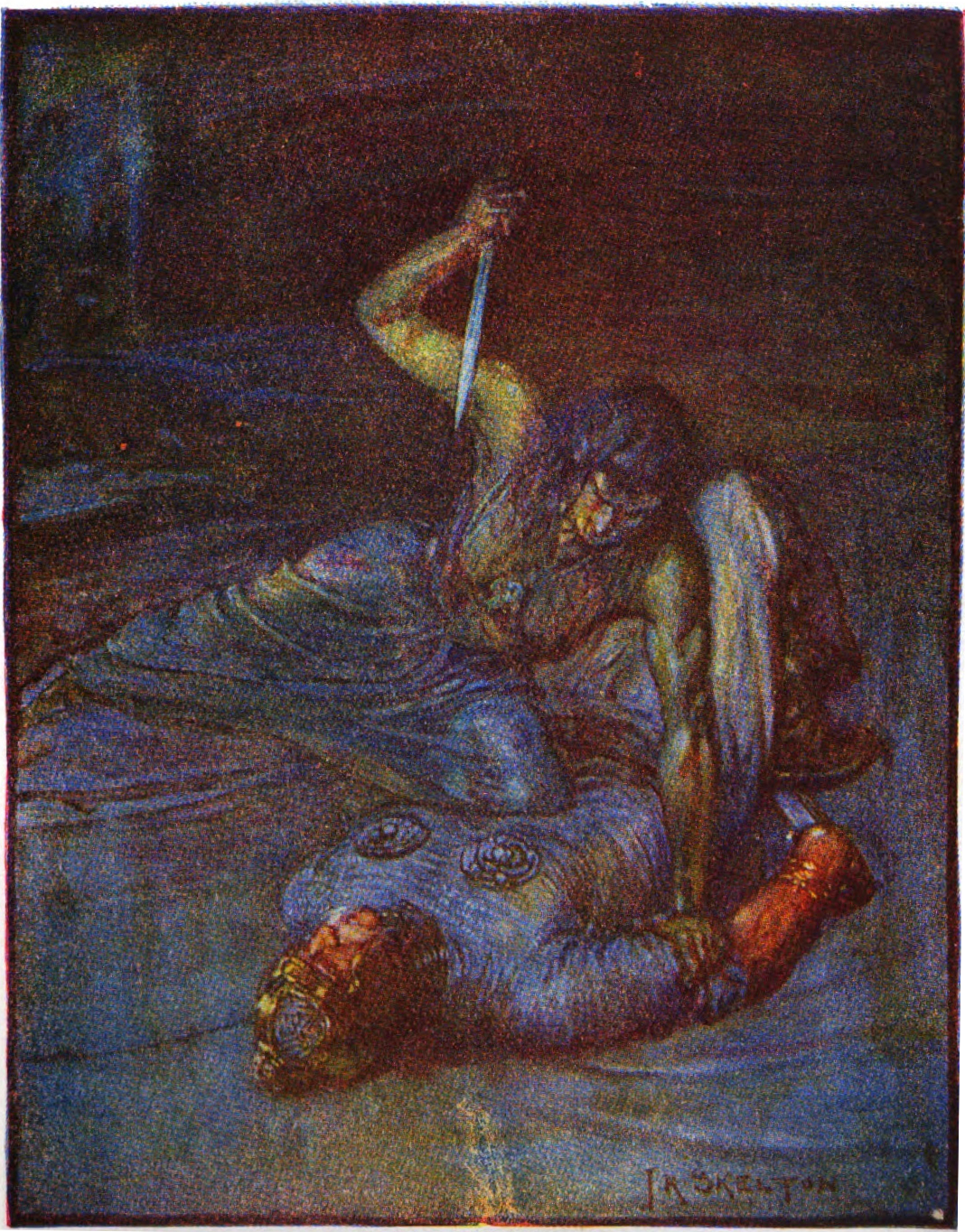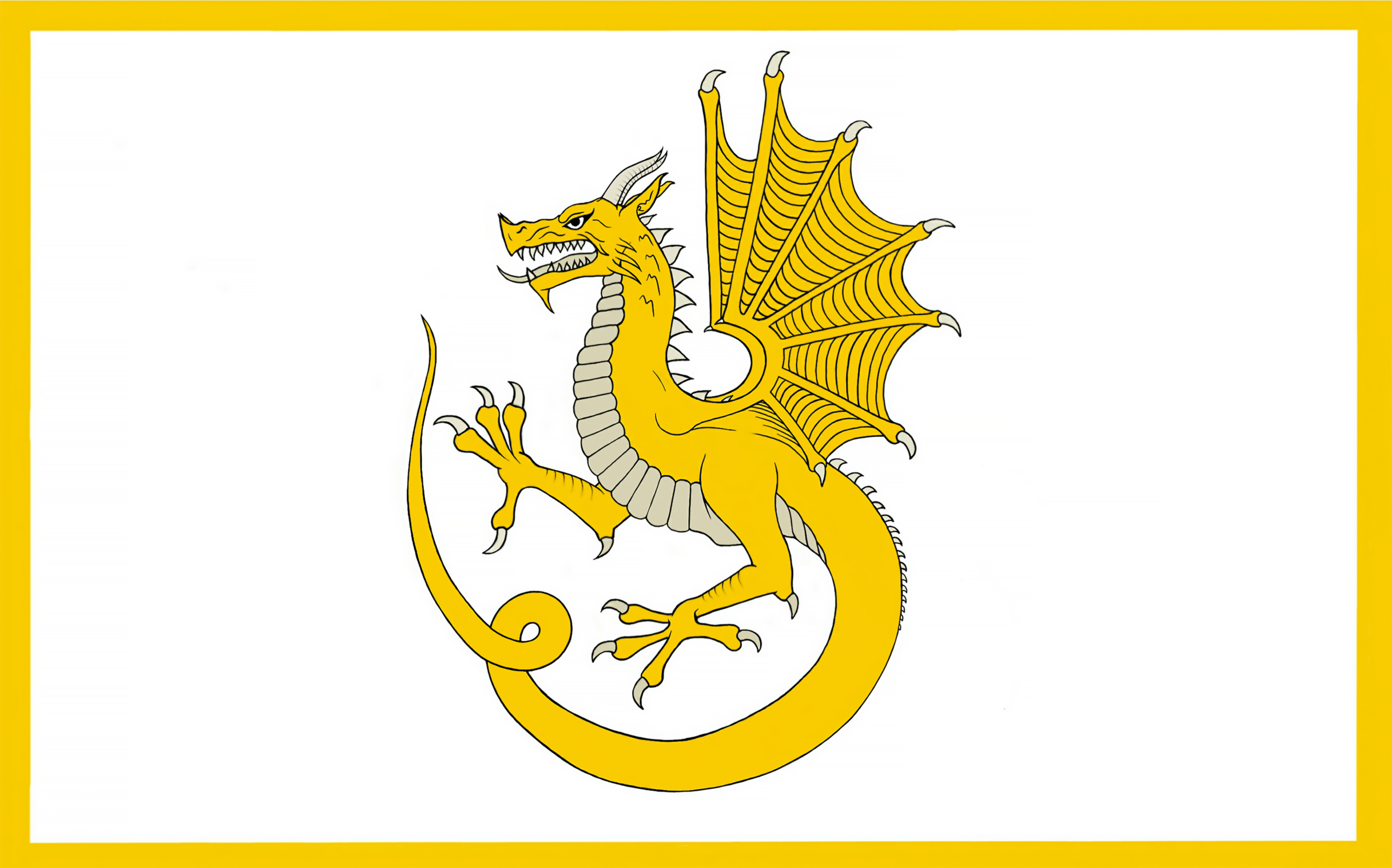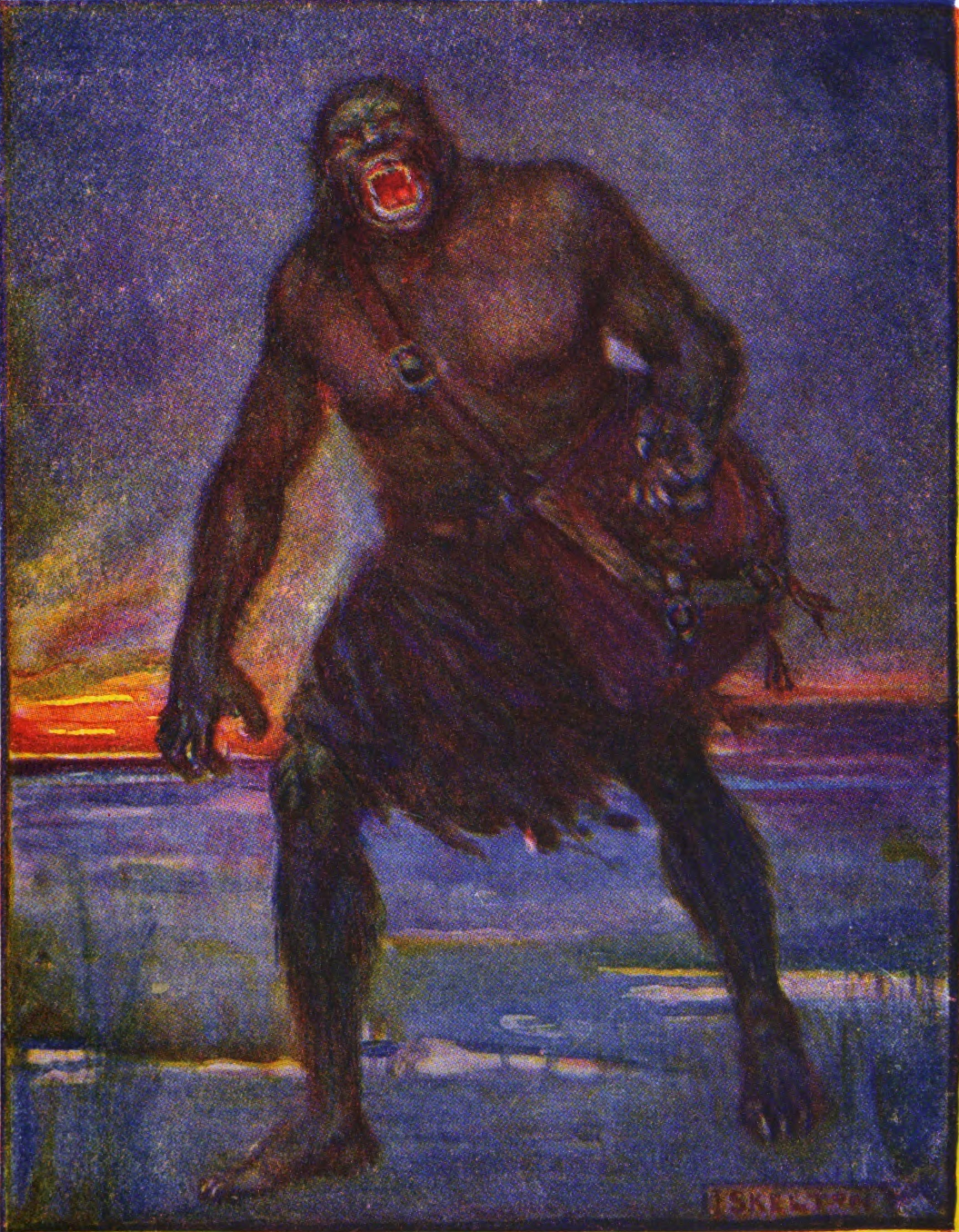|
Grendel (film)
''Grendel'' is a 2007 American action-fantasy television film directed by Nick Lyon and very loosely based on the Anglo-Saxon epic poem ''Beowulf''. The television film was produced by the Sci Fi channel as an original movie for broadcasting on the Sci Fi cable television network, and began airing on January 13, 2007. In 2010 it was released on DVD from the sister company by Universal Pictures. Synopsis Beowulf, hero of many stories, is asked by some villagers to kill a monster living nearby. Together with his protégé Finn he goes in search of the monster and finally locates it in a cave, which he enters alone. The monster turns out to be a gigantic snake, which Beowulf beheads. Later, Beowulf, Finn, his uncle King Higlack and a few men sets out on his ship towards Denmark to help the Danes fighting against the monster Grendel. On board Beowulf tells the story of King Hrothgar, who became King of the Danes and founded a city that could compete with Rome. One day a wyvern-like ... [...More Info...] [...Related Items...] OR: [Wikipedia] [Google] [Baidu] |
Beowulf
''Beowulf'' (; ang, Bēowulf ) is an Old English epic poem in the tradition of Germanic heroic legend consisting of 3,182 alliterative lines. It is one of the most important and most often translated works of Old English literature. The date of composition is a matter of contention among scholars; the only certain dating is for the manuscript, which was produced between 975 and 1025. Scholars call the anonymous author the "''Beowulf'' poet". The story is set in pagan Scandinavia in the 6th century. Beowulf, a hero of the Geats, comes to the aid of Hrothgar, the king of the Danes, whose mead hall in Heorot has been under attack by the monster Grendel. After Beowulf slays him, Grendel's mother attacks the hall and is then defeated. Victorious, Beowulf goes home to Geatland and becomes king of the Geats. Fifty years later, Beowulf defeats a dragon, but is mortally wounded in the battle. After his death, his attendants cremate his body and erect a tower on a headland in ... [...More Info...] [...Related Items...] OR: [Wikipedia] [Google] [Baidu] |
TV Movie
A television film, alternatively known as a television movie, made-for-TV film/movie or TV film/movie, is a feature-length film that is produced and originally distributed by or to a television network, in contrast to theatrical films made for initial showing in movie theaters, and direct-to-video films made for initial release on home video formats. In certain cases, such films may also be referred to and shown as a miniseries, which typically indicates a film that has been divided into multiple parts or a series that contains a predetermined, limited number of episodes. Origins and history Precursors of "television movies" include ''Talk Faster, Mister'', which aired on WABD (now WNYW) in New York City on December 18, 1944, and was produced by RKO Pictures, and the 1957 ''The Pied Piper of Hamelin'', based on the poem by Robert Browning, and starring Van Johnson, one of the first filmed "family musicals" made directly for television. That film was made in Technicolor, a f ... [...More Info...] [...Related Items...] OR: [Wikipedia] [Google] [Baidu] |
Grendel's Mother
Grendel's mother ( ang, Grendles mōdor) is one of three antagonists in the anonymous Old English poem ''Beowulf'' (c. 700-1000 AD), the other two being Grendel and the dragon. Each antagonist reflects different negative aspects of both the hero Beowulf and the heroic society that the poem is set in. Grendel's mother is introduced in lines 1258b to 1259a as: "Grendles modor/ides, aglæcwif". Grendel's mother, who is never given a name in the text, is the subject of an ongoing controversy among medieval scholars. This controversy is due to the ambiguity of a few words in Old English which appear in the original ''Beowulf'' manuscript. While there is agreement over the word "modor" (mother), the phrase "ides, aglæcwif" is the subject of scholarly debate. Story The poem, ''Beowulf,'' is contained in the Nowell Codex. As noted in lines 106–114 and lines 1260–1267 of ''Beowulf,'' monsters (which include Grendel's mother and Grendel) are descendants of Cain. After Grendel i ... [...More Info...] [...Related Items...] OR: [Wikipedia] [Google] [Baidu] |
Unferð
In the Old English epic poem ''Beowulf'', Unferth or Hunferth is a thegn (a retainer, servant) of the Danish lord Hrothgar. He appears five times in the poem — four times by the name 'Hunferð' (at lines 499, 530, 1165 and 1488) and once by the appellation "the son of Eclafes" (at line 980). The name ''Unferth'' does not appear in any Old English manuscript outside of the Nowell Codex, which contains ''Beowulf'', and the meaning of the name is disputed. Several scholarly theories about Unferth have been proposed. Unferth is also the name of a character in the modern novel '' Grendel'' by John Gardner, based upon the ''Beowulf'' epic. Etymology Unferth's name can be understood in a number of ways. A common reading, by Morton W. Bloomfield is to see it as ''un'' + ''frith'', "mar peace": similarly, J. R. R. Tolkien considered the name to mean Unpeace/Quarrel, or perhaps 'Unfriend'. However, Searle's ''Onomasticon Anglo-Saxonicum'' lists several mentions of medieval historic per ... [...More Info...] [...Related Items...] OR: [Wikipedia] [Google] [Baidu] |
Crossbow
A crossbow is a ranged weapon using an elastic launching device consisting of a bow-like assembly called a ''prod'', mounted horizontally on a main frame called a ''tiller'', which is hand-held in a similar fashion to the stock of a long firearm. Crossbows shoot arrow-like projectiles called '' bolts'' or ''quarrels''. A person who shoots crossbow is called a ''crossbowman'' or an '' arbalist'' (after the arbalest, a European crossbow variant used during the 12th century). Although crossbows and bows use the same launch principle, the difference is that an archer must maintain a bow's draw manually by pitching the bowstring with fingers, pulling it back with arm and back muscles and then holding that same form in order to aim (which distresses the body and demands significant physical strength and stamina); while a crossbow utilizes a locking mechanism to maintain the draw, limiting the shooter's exertion to only pulling the string into lock and then releasing the shot ... [...More Info...] [...Related Items...] OR: [Wikipedia] [Google] [Baidu] |
Wealhþeow
Wealhtheow (also rendered Wealhþēow or Wealthow; ang, Ƿealhþēoƿ ) is a queen of the Danes in the Old English poem, ''Beowulf'', first introduced in line 612. Character overview Wealhtheow is of the Wulfing clan, Queen of the Danes. She is married to Hrothgar (Hrōðgār), the Danish king and is the mother of sons, Hreðric and Hroðmund, and a daughter Freawaru. The meaning of her name is disputed. One possible translation is "foreign slave" (Hill, 1990). In her marriage to Hrothgar she is described as ''friðusibb folca'' (l. 2017), 'the kindred pledge of peace between peoples', signifying interdynastic allegiance between Wulfing and Scylding achieved with her marriage to Hrothgar. She is both 'Lady of the Helmings' (l. 620) (by descent, of the Wulfing clan of Helm) and 'Lady of the Scyldings' (l. 1168), by marriage and maternity. Two northern sources associate the wife of Hrothgar with England. The ''Skjöldunga saga'', in Arngrímur Jónsson's abstract, chapter 3, tells ... [...More Info...] [...Related Items...] OR: [Wikipedia] [Google] [Baidu] |
Wyvern
A wyvern ( , sometimes spelled wivern) is a legendary winged dragon that has two legs. The wyvern in its various forms is important in heraldry, frequently appearing as a mascot of schools and athletic teams (chiefly in the United States, United Kingdom, and Canada). It is a popular creature in European literature, mythology, and folklore. Today, it is often used in fantasy literature and video games. The wyvern in heraldry and folklore is rarely fire-breathing, unlike four-legged dragons. Etymology According to the ''Oxford English Dictionary'', the word is a development of Middle English ''wyver'' (attested fourteenth century), from Anglo-French ''wivre'' (cf. French ''guivre'' and ''vouivre''), which originate from Latin ''vīpera'', meaning "viper", "adder", or "asp". The concluding "''–n''" had been added by the beginning of the 17th century, when John Guillim in 1610 describes the "''wiverne''" as a creature that "partake of a Fowle in the Wings and Legs ... and doth ... [...More Info...] [...Related Items...] OR: [Wikipedia] [Google] [Baidu] |
Rome
, established_title = Founded , established_date = 753 BC , founder = King Romulus (legendary) , image_map = Map of comune of Rome (metropolitan city of Capital Rome, region Lazio, Italy).svg , map_caption = The territory of the ''comune'' (''Roma Capitale'', in red) inside the Metropolitan City of Rome (''Città Metropolitana di Roma'', in yellow). The white spot in the centre is Vatican City. , pushpin_map = Italy#Europe , pushpin_map_caption = Location within Italy##Location within Europe , pushpin_relief = yes , coordinates = , coor_pinpoint = , subdivision_type = Country , subdivision_name = Italy , subdivision_type2 = Region , subdivision_name2 = Lazio , subdivision_type3 = Metropolitan city , subdivision_name3 = Rome Capital , government_footnotes= , government_type = Strong Mayor–Council , leader_title2 = Legislature , leader_name2 = Capitoline Assemb ... [...More Info...] [...Related Items...] OR: [Wikipedia] [Google] [Baidu] |
Hrothgar
Hrothgar ( ang, Hrōðgār ; on, Hróarr) was a semi-legendary Danish king living around the early sixth century AD. Hrothgar appears in the Anglo-Saxon epics ''Beowulf'' and ''Widsith'', in Norse sagas and poems, and in medieval Danish chronicles. In both Anglo-Saxon and Scandinavian tradition, Hrothgar is a Scylding, the son of Halfdan, the brother of Halga, and the uncle of Hrólfr Kraki. Moreover, in both traditions, the mentioned characters were the contemporaries of the Swedish king Eadgils; and both traditions also mention a feud with men named Fróði and Ingeld. The consensus view is that Anglo-Saxon and Scandinavian traditions describe the same person. Names Hrothgar, also rendered ''Hrōðgār'', is an Old English form attested in ''Beowulf'' and ''Widsith'', the earliest sources to mention the character. In non-English sources, the name appears in more or less corresponding Old Icelandic, Old Danish, and Latinized versions. He appears as ''Hróarr'', ''Hroar'', ... [...More Info...] [...Related Items...] OR: [Wikipedia] [Google] [Baidu] |
Grendel
Grendel is a character in the Anglo-Saxon epic poem '' Beowulf'' (700–1000). He is one of the poem's three antagonists (along with his mother and the dragon), all aligned in opposition against the protagonist Beowulf. Grendel is feared by all in Heorot but Beowulf. A descendant of Cain, Grendel is described as "a creature of darkness, exiled from happiness and accursed of God, the destroyer and devourer of our human kind". He is usually depicted as a monster or a giant, although his status as a monster, giant, or other form of supernatural being is not clearly described in the poem and thus remains the subject of scholarly debate. The character of Grendel and his role in the story of ''Beowulf'' have been subject to numerous reinterpretations and re-imaginings. Story Grendel is a character in the poem ''Beowulf,'' preserved in the ''Nowell Codex''. Grendel, being cursed as the descendant of the Biblical Cain, is "harrowed" by the sounds of singing that come every night ... [...More Info...] [...Related Items...] OR: [Wikipedia] [Google] [Baidu] |
Denmark
) , song = ( en, "King Christian stood by the lofty mast") , song_type = National and royal anthem , image_map = EU-Denmark.svg , map_caption = , subdivision_type = Sovereign state , subdivision_name = Danish Realm, Kingdom of Denmark , established_title = History of Denmark#Middle ages, Consolidation , established_date = 8th century , established_title2 = Christianization , established_date2 = 965 , established_title3 = , established_date3 = 5 June 1849 , established_title4 = Faroese home rule , established_date4 = 24 March 1948 , established_title5 = European Economic Community, EEC 1973 enlargement of the European Communities, accession , established_date5 = 1 January 1973 , established_title6 = Greenlandic home rule , established_date6 = 1 May 1979 , official_languages = Danish language, Danish , languages_type = Regional languages , languages_sub = yes , languages = German language, GermanGerman is recognised as a protected minority language in t ... [...More Info...] [...Related Items...] OR: [Wikipedia] [Google] [Baidu] |
Finn (Frisian)
Finn, son of Folcwald, was a legendary Frisian king. He is mentioned in ''Widsith'', in ''Beowulf'', and in the Finnesburg Fragment. He is named in the ''Historia Brittonum'', while a Finn, given a different father but perhaps intending the same hero, appears in Anglo-Saxon royal pedigrees. He was married to Hildeburh, a sister of the Danish lord Hnæf, and was killed in a fight with Hnæf's lieutenant Hengest after Hnæf was himself killed by Frisians. A passage from ''Beowulf'' as translated by Seamus Heaney (lines 1089–1090) reads: :"Finn, son of Folcwald, :should honour the Danes,..." A possible reference to a lost tradition on Finn appears in Snorri Sturluson's ''Skáldskaparmál''. Snorri talks of the animosity between Eadgils and Onela (which also appears in ''Beowulf''), and writes that Aðils (Eadgils) was at war with a Norwegian king named Áli (Onela). Áli died in the war, and Aðils took Áli's helmet ''Battle-boar'' and his horse Raven. The Danish berserker ... [...More Info...] [...Related Items...] OR: [Wikipedia] [Google] [Baidu] |
_2.jpg)






